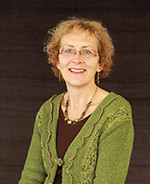Stéphanie Condon
presents her mission as INED’s gender equality supervisor

Stéphanie Condon is an INED researcher and co-head of the International Migrations and Minorities research unit. She studies migrations, French overseas département societies and related subjects, focusing in particular on gender relations. She participated in designing the country’s first national survey on violence against women, ENVEFF (2000). In spring 2015 she became INED’s gender equality supervisor.
(Interview conducted in June 2015)
Last spring you were appointed gender equality supervisor at INED. What does this entail?
The mission is part of a movement to promote gender equality in higher education and research. Appointing an equality supervisor is one of the measures recommended by the Charter for equality between men and women drafted in 2013 by the Association of university and engineering school presidents with support from the Ministry of higher education and research and the Ministry for women’s rights.
The “equality charter” calls on all higher education institutions to use non-sexist, non-discriminatory, non-stereotyping language in all communication; to compile and diffuse gender statistics on staff distribution by corps [administrative body] and rank; to act to raise awareness about equality issues and prevent all varieties of violence and harassment.
To better ensure application of the charter, a roadmap was sent out in 2015 to all National Education departments and institutions of higher learning, and research. The aim is to give greater visibility to the actions being taken and to promote information transfer so that successful actions can serve as models. Equality supervisors work to coordinate the various measures and ensure they are taken up outside their own institutions. The higher education and research equality network is holding its second annual meeting and study day on June 25 at the University of Rennes 2.
And what actions are you going to be undertaking?
This fall I’m going to draw up a report on current INED staff distribution by department and hierarchical position. This will be followed by meetings with the different departments so that we can reflect collectively on sexism, stereotypes, sexual harassment in daily life at work. The world of research has become considerably feminized, and INED is no exception, but some departments have more women than others. Progress should be highlighted, but we also need to ask, does having a majority of women mean we’ve attained parity? What kinds of jobs are women doing?
Moreover, feminization does not necessarily guarantee equality. A woman director is quite capable of making sexist decisions—not choosing a pregnant researcher to direct a project, for example. Regarding working conditions, equality also means respecting men’s rights; for example, providing paternity leaves for young fathers or not scheduling meetings at the end of the day. By discussing these questions we can also alert people to risks of sexist behaviour or harassment outside the Institute, at conferences or on task forces, for example.
Lastly, we need to think about the images and graphics we use to illustrate research studies, so as to avoid conveying gender stereotypes. We have to be careful not to use icons that designate women by means of a skirt or ponytail or to use pink and blue in histograms, careful about the photos we choose.
So my task is to set up arrangements for “monitoring” the gender situation. There’s been real progress, but there’s always the threat of a sliding backward, because certain stereotypes are deeply ingrained in women and men alike.
Is there still progress to be made in female-male equality in the world of social science research?
Women have acquired a strong presence in the disciplines of demography and sociology. But women researchers sometimes find themselves confined to « women’s » subjects, subjects that are therefore less valued. It would be interesting to compare disciplines on this point.
And we still need to integrate the gender dimension into all areas of study, being attentive to how gender inequalities intersect with other forms of social inequality (class, age, racism-induced inequality and others)—what’s called “intersectionality.” In this connection, we have a role to play when we supervise young researchers and doctoral students.
INED gender studies can be used to inform the general public and decision-makers and help get anti-inequality measures passed. But working on gender doesn’t just mean studying women’s situation. To have a complete picture, we also need to observe the impact of stereotypes on men. In a field like migration, for example, we don’t have enough studies of men, whereas women migrants have been studied a great deal in recent years, particularly those working in home help and personal care services. Here again, INED researchers can help diffuse this kind of thinking throughout the research world and share their “gender culture” when collaborating with outside researchers and decision-makers.
